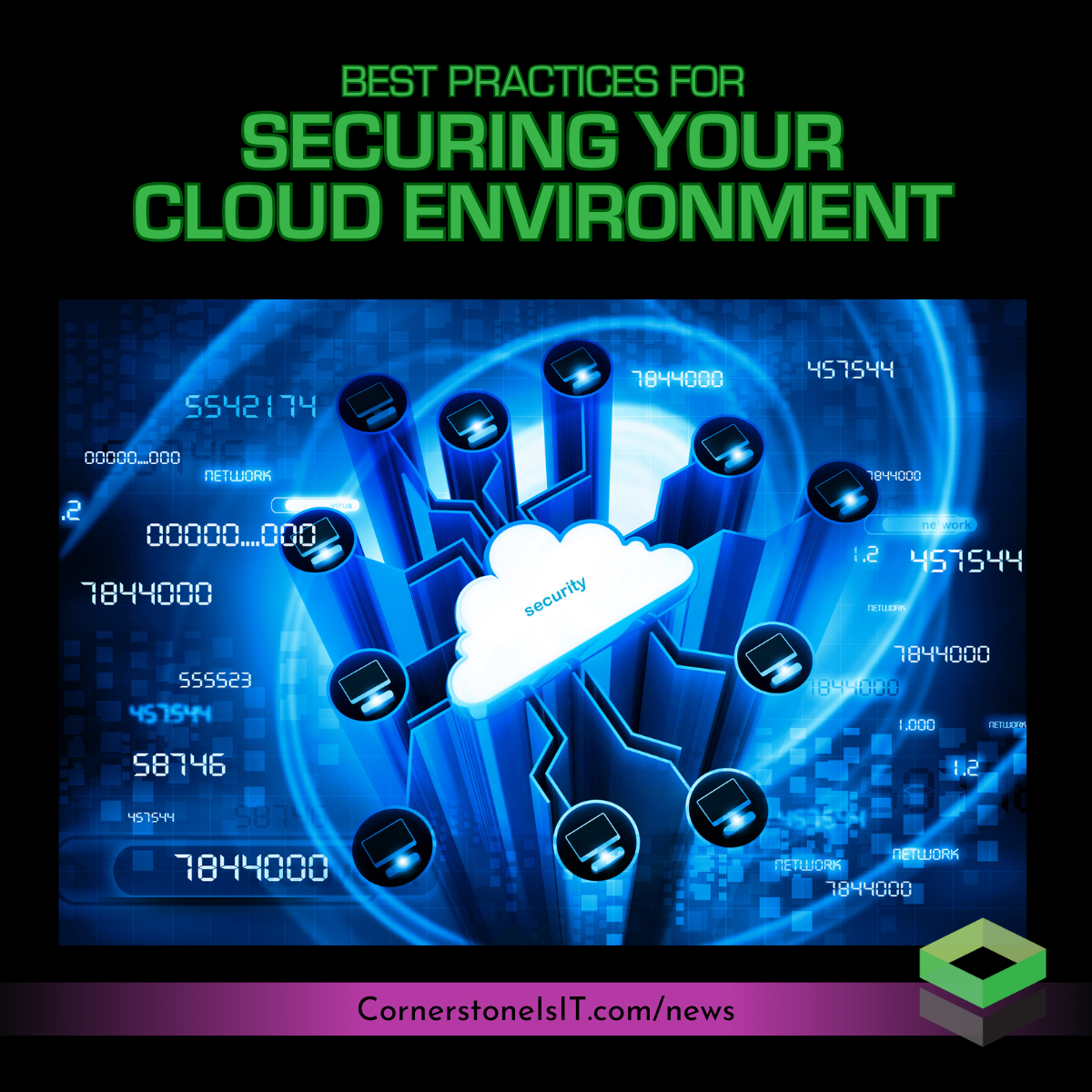
In the world of IT, cloud computing has become the backbone of modern businesses. Leveraging the power of the cloud provides unparalleled flexibility and scalability, but it also comes with the responsibility of ensuring robust cybersecurity. In this comprehensive guide, we'll explore practical tips and best practices to secure your cloud environment effectively.
Need a little extra information on the cloud? Read Cloud Computing 101
“39% of businesses experienced a data breach in their cloud environment last year”
10 Tips for Securing Your Cloud Data
1. Understand Your Cloud Environment
Before diving into security measures, it's crucial to have a thorough understanding of your cloud environment. Identify the types of cloud services you're using, whether it's Infrastructure as a Service (IaaS), Platform as a Service (PaaS), or Software as a Service (SaaS). This knowledge forms the foundation for crafting a tailored security strategy.
2. Implement Strong Authentication and Access Controls
-
Multi-Factor Authentication (MFA): Enforce MFA for all user accounts to add an extra layer of security.
-
Role-Based Access Control (RBAC): Assign roles with the minimum necessary permissions to limit access based on job responsibilities.
3. Encrypt Data in Transit and at Rest
-
Transport Layer Security (TLS): Ensure that all data transmitted between your system and the cloud is encrypted using TLS protocols.
-
Data Encryption at Rest: Enable encryption for data stored in the cloud to safeguard it from unauthorized access.
4. Regularly Update and Patch Systems
Keep your cloud infrastructure and applications up to date with the latest security patches. Regular updates mitigate vulnerabilities that could be exploited by cyber threats. Learn more about patches
5. Monitor and Audit Activities
Implement continuous monitoring and auditing of your cloud environment. This involves:
-
Logging: Activate comprehensive logging to track user activities, system events, and potential security incidents.
-
Regular Audits: Conduct regular audits of your cloud environment to identify any anomalies or unauthorized access.
6. Secure Cloud Storage Properly
-
Access Controls: Set strict access controls for cloud storage, limiting permissions to only those who need them.
-
Regular Audits: Periodically review the contents of your cloud storage, removing outdated or unnecessary data.
7. Backup and Disaster Recovery
Develop a robust backup and disaster recovery plan to ensure business continuity. Regularly test your backups to verify their integrity and reliability in case of emergencies. See why one data backup isn’t enough
8. Educate and Train Your Team
Your team is a critical line of defense. Provide comprehensive cybersecurity training to ensure they are aware of potential threats, phishing scams, and best practices for secure cloud usage. See your number one security threat
9. Regularly Assess Security Risks
-
Vulnerability Assessments: Conduct regular vulnerability assessments to identify and address potential security risks.
-
Penetration Testing: Periodically perform penetration testing to simulate real-world attacks and uncover vulnerabilities.
10. Stay Informed About Cloud Security Trends
Stay abreast of the latest developments in cloud security. Regularly review and update your security policies to align with industry best practices and evolving cyber threats. Get tech news delivered to your inbox
Securing your cloud environment is an ongoing process that requires diligence and adaptability. By following these practical tips and best practices, you can build a resilient security framework for your cloud infrastructure. Remember, cybersecurity is a shared responsibility, and with the right strategies in place, you can harness the full potential of cloud computing while safeguarding your digital assets.


Leave Your Comment Here